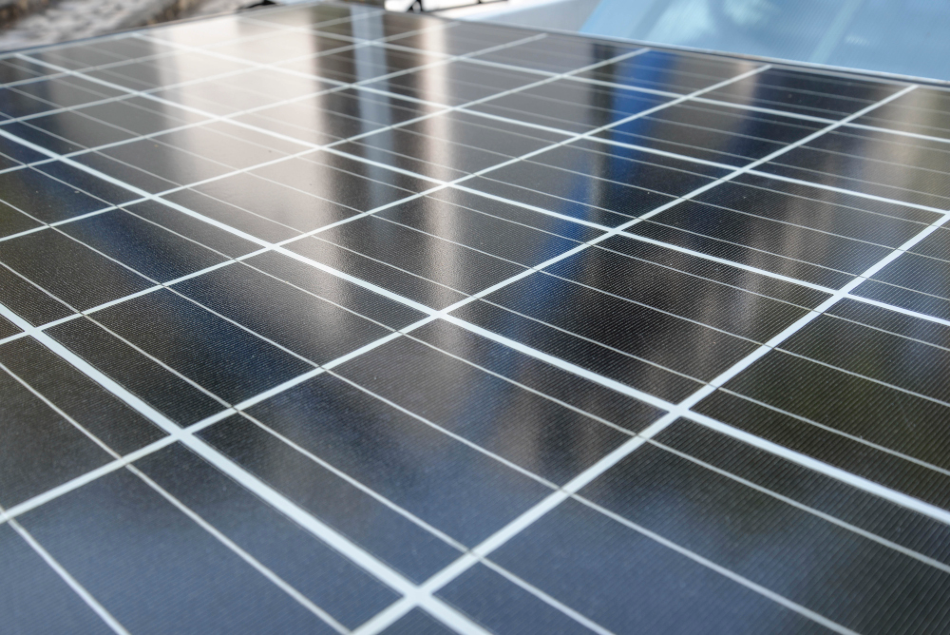May 20 2020
Imagine the environmental benefits if we could simply paint solar cells onto the roofs of our houses, or onto any surface for that matter. Researchers from the Graphene Flagship have created technology to enable just that. As one of the organisation’s Spearhead Projects — a series of initiatives to take graphene from the research laboratory to the commercial market — the Solar Farm project is currently creating the world’s first graphene-enabled solar farm in Crete.

Graphene for renewable applications has long been a priority area of research for the Graphene Flagship and the Solar Farm initiative is focusing on the industrialisation and real-life deployment of this technology. Led by Graphene Flagship partner University of Rome Tor Vergata in the Centre for Hybrid and Organic Solar Energy (CHOSE), the project has already achieved great successes in relation to solar module development.
This progress in PSCs means that they are primed to become an affordable and flexible solar cell option for conventional and smart, low-intensity applications. This is because PSCs are less complex to produce, are made with cheaper materials and, due to their flexibility, can be used in locations where traditional silicon solar cells cannot be placed.
PSCs are improving fast. When they were first developed in 2009, they had an initial efficiency of 3.8 per cent. Today, they can achieve efficiencies above 25 per cent. In comparison, silicon solar cells have been around since 1880, only reaching efficiency levels of 26.6 per cent in 2019.
The main weakness of PSCs is their stability. This is where graphene and the molybdenum disulphide quantum dot/graphene hybrids come into play. The collaboration between research institutions and industrial partners enabled by Graphene Flagship, yielded a GRM based ink. Layering this over the PSCs saw them drastically increase the stability. Thus, the plan for the Crete solar farm was born.
Graphene was central in the development of this technology, as molybdenum disulphide was anchored to reduced graphene oxide. This allowed for both materials’ properties to be applied and the ink not only increased the stability but also the performance of the PSC.
“The Graphene Flagship was central to this development,” explained Professor Emanuel Kymakis, work package deputy leader for energy generation. “The funding and structure that they put in place were key to allowing new research teams to take part, such as the University of Rome Tor Vergata.
“Thanks to this research, we have overcome a major hurdle to adopting this new technology,” continued Professor Kymakis. “With the new levels of stability and performance, we could see the mass adoption of PSCs in the next few years.”
As the PSCs stability is now improved, attention can focus on scaling up production and deploying this in Crete. Manufacturing PSCs requires solution processing, that can be ramped up to an industrial scale.
PSC fabricated on flexible substrates can be applied to nearly any surface and produce electricity. In fact, stable PSCs could change the way we power our homes and devices, as every available surface could be made to generate electricity.
Producing these large area PSCs, researchers have successfully achieved power conversion efficiencies of 13.4 per cent and 15.3 per cent — this figure is based on active areas of 108 cm² and 82 cm² respectively. This is a colossal size for such a high level of efficiency. However, the leaders of this project aim to surpass this figure as the solar farm is brought to fruition.
"We have set ambitious targets for the solar farm project," explained Aldo di Carlo, Spearhead Leader for Energy Generation at the Graphene Flagship. "Future exploitation of graphene perovskite in tandem with solar cell will show power conversion efficiencies far beyond present records.”
The 1 kWp solar farm, which is currently in development in Crete, is being ceated in collaboration with the University of Rome Tor Vergata, the Hellenic Mediterranean University, the University of Cambridge, the Instituto Italiano di Tecnologia and the GreatCell Solar.
The solar farm will bolster the efforts of the Graphene Flagship to demonstrate the potential of this environmentally friendly technology and is set for completion in 2020. More information can be found on the Graphene Flagship website.